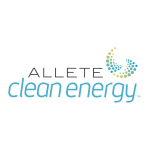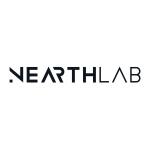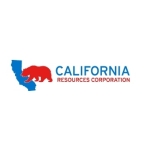12th annual California Green Innovation Index finds state must achieve five percent emissions reductions each year through 2030 as recession persists
Heavy-duty transportation, case studies of local pollution reduction projects illustrate potential of programs to be scaled
SAN FRANCISCO--(BUSINESS WIRE)--California’s stand out progress reducing greenhouse gas emissions has temporarily reversed, with pollution upticks signaling an increasingly difficult path ahead in achieving the state’s 2030 and 2050 climate targets. That’s the finding of the 12th annual California Green Innovation Index—released by the nonpartisan nonprofit Next 10 and prepared by Beacon Economics.

This year’s Index finds that 2018 greenhouse gas emissions—the latest year for which data are available—rose overall for the first time since 2012, driven in part by increases in the power and commercial sectors. Data from the report illustrate that California now must reduce emissions by an average of 4.9 percent each year from 2020 to 2030 to cut emissions to 40 percent below 1990 levels by 2030, as mandated by SB 32. The largest one-year emissions drop California has ever achieved was at the height of the Great Recession in 2009, when climate pollution fell 6.1 percent. While 2020 may see a similar emissions drop, the state has never cut emissions more than 2.6 percent in a year while not experiencing an economic downturn since California passed AB 32 in 2006. Now the state must double that each year. In this way, the 2020 Index illustrates the many complex challenges that state leaders face in prioritizing policies to combat the climate crisis this decade.
“This year’s Index highlights just how much things need to change,” said F. Noel Perry, businessman and founder of Next 10. “Programs instituted in the past decade may not achieve the gains we need in the coming decade. The fact is, we’ve never come anywhere near cutting emissions five percent in a single year in a period of economic stability—and yet, in order to meet our climate goal by 2030, we have to. But, if any state can achieve this level of reductions while supporting a healthy economy, it’s California.”
The report emphasizes how a steady rise in commercial emissions, a surprise uptick in power sector emissions, and—for the first time in three years—a dip in transportation pollution, illustrate some of the challenges and opportunities facing policymakers. It also comes as the California Air Resources Board welcomes a new chair and several new board members who are now tasked with steadily cutting emissions in a manner that has never been achieved.
“California has a solid history of reducing emissions while growing the economy, up until this slight increase in 2018. That’s an important achievement,” said Hoyu Chong, practice lead for sustainable growth and development at Beacon Economics. “We now need to ramp up those efforts in the face of major emissions and economic challenges. Investment breeds investment—so a recovery program that includes clean energy stimulus investments may be exactly what we need for a reset that enables us to scale solutions to these competing crises together.”
Key findings of this year’s Green Innovation Index include:
-
Total emissions rose 0.83 million metric tons of carbon dioxide-equivalent (MMTCO2e) to 425.3 MMTCO2e (+0.2%) in 2018 compared to 2017. This level is still below the state’s first climate milestone (2020’s AB 32 goal, met four years early in 2016) of reducing to 431 MMTCO2e below 1990 levels.
-
While the transportation sector saw a reduction in emissions from 2017 to 2018 (-0.9%), emissions rose in all other economic sectors in 2018: Agriculture & Forestry (+0.8%), Commercial (+2.1%), Electricity Power (+1.5%), Industrial (+0.7%), and Residential (+0.3%).
-
Despite the slight increase in emissions of 0.2 percent, the state has managed to continue to reduce its carbon intensity—emissions relative to GDP— by 3.2 percent from 2017 to 2018 thanks to a strong growth in real GDP.
-
At the current trajectory, the state will take significantly more time to reach the 2030 and 2050 emissions goals than it did to reach the 2020 goal. Assuming the same three-year average rate of reduction from 2015 to 2018 (-1.18%), California needs to quadruple the rate of reduction to achieve the 2030 goal and ramp up that rate of reduction even more to achieve the 2050 goal.
-
California’s energy-related emissions were 9.1 MTCO2e per person in 2017—the third-lowest among the 50 states, behind New York and Maryland.
POWER AND COMMERCIAL SECTOR EMISSIONS INCREASES WORRISOME
The electric power sectors (imports and in-state generation), which have reliably and significantly reduced emissions since 2008 (-47.4% from 2008 to 2018), actually increased slightly in 2018, driven by a decrease in electricity generated by large hydroelectric sources and an increase in generation from natural gas compared to 2017. This was especially true for merchant-owned electricity generation in-state. Imported generation from unspecified sources accounted for an even greater increase in emissions—increasing by 31 percent in 2018.
At the current pace, the state should meet the 50 percent and 60 percent RPS goals by 2026 and 2030, respectively—requiring an increase in renewable generation of 2.6 percent each year from 2019 to 2026 and by 2.5 percent annually from 2026 to 2030.
However, in March 2020, as part of the state’s next cycle for energy resource planning, the California Public Utilities Commission voted to approve a target to reduce emissions for the electric sector to 46 million metric tons carbon dioxide-equivalent (MMTCO2e) by 2030, and instructed energy load providers in the state to also plan for an alternative scenario of a 38 MMTCO2e reduction target by the same year. The Index finds the approved 46 MMTCO2e scenario could hamper the momentum that California’s electric sector has gained in the last several years—and that even the 38 MMTCO2e target may be too high, forcing the electricity sector to rely on achieving steeper emissions, and increasing the use of renewables, in later years.
“Reaching our long-term climate goals is like saving for retirement—the earlier you start to save, the more you have in the bank, and the less work you have to do down the road,” said Chong. “We can’t keep punting the emissions burden, particularly in the power sector. We need to spur innovation in this sector now—with a ramping up of renewable resources plus storage solutions like long-duration storage, so that we don’t risk forcing ourselves into a dramatic and unachievable sprint at the end.”
Replacement of ozone depleting substances causes commercial sector emissions to skyrocket
Compared to 2017, the commercial sector experienced the largest one-year emissions increase (+2.7%) of any sector, and emissions in this sector have shot up 69.3 percent since 2000, with no sign of slowing down. The continuous uptick is primarily due to adoption of carbon-intensive HVAC and refrigeration technologies that came to replace ozone-depleting substances (ODS) phased out decades ago via the Montreal Protocol.
The technologies that replaced hydrofluorocarbons (HFCs) and perfluorocarbons (PFCs) now represent the fastest-growing source of global warming pollution in California—accounting for 4.7 percent of total statewide emissions in 2018—a considerably larger share compared to 2008 (2.3%) and 2000 (1.2%). Internationally, there have been efforts to address this emissions problem (via the Kigali Amendment to the Montreal Protocol, which entered into force in January 2019) by creating market certainty to allow growth of more environmentally friendly alternatives.
The United States has not yet ratified that agreement, but president-elect Biden has indicated plans to do so. And at the state level, California has implemented a number of programs and policies to help transition away from these “super pollutant” refrigerants – including the recent announcement of a new rule that will require all new facilities to use refrigerants that can reduce their emissions by up to 90 percent beginning in 2022. While the California Air Resources Board had recently warned that the state may not be able to meet its 40 percent below 2013 levels reduction goal for these substances by 2030, this new rule could go a significant way in reducing emissions from refrigeration and commercial sector emissions overall.
“We’re encouraged that the ARB has recently announced new standards for reducing the use of these harmful “super polluting” substances,” said Perry. “Businesses have expended significant capital on these technologies that have a long life-span, so the more we can work to scale innovative programs and incentives to move to cleaner technologies, the faster we can help lead a market transformation away from these harmful pollutants.”
California’s record-breaking wildfire season also adds to the complicated picture. As of September 13, 2020, emissions from wildfires reached 83 MMTCO2e—82.4 percent above the 45.5 MMTCO2e recorded for wildfire emissions in 2018. While the state’s forests also serve as a carbon sink, the increasing threat of wildfires and the kind of mega-fires experienced in 2020 pose a significant emissions challenge—not to mention the impacts of particulate matter pollution, which further worsen air quality throughout the state.
TRANSPORTATION BRIGHT SPOT TACKLES DEADLY PARTICULATE POLLUTION, MORE MUST BE DONE TO TRANSITION TO ELECTRIC VEHICLES
The Transportation sector remains by far the largest emitting sector in California, but its share of emissions dropped from an all-time high of 41.3 percent in 2017 to 40.9 percent in 2018—driven by a large drop in heavy-duty vehicle pollution.
All three subsectors of on-road heavy-duty vehicles had reductions in emissions: Heavy-duty Trucks (-4.0%), Buses (-4.6%), and Motorhomes (-3.6%). This sector represents an increased area of opportunity thanks to the Advanced Clean Trucks standard that was adopted by the Air Resources Board in July 2020, which will increase the sale of zero-emission trucks in coming years. On the horizon is the Advanced Clean Fleet standard that is set to be voted on by CARB in late 2021, which will set standards for fleet electrification to align with the manufacturing targets.
But while gains have been made in heavy-duty, emissions from off-road vehicles and light-duty vehicles remain a significant challenge.
Transportation Key Findings
-
Within the transportation sector, emissions dropped 1.3 percent from the on-road vehicles subsector, but increased 3.6 percent from off-road vehicles, which includes airport ground equipment, construction and mining equipment, industrial equipment and oil drilling equipment.
-
While the amount of transportation fuel consumed in 2018 was similar to levels from ten and fifteen years prior, emissions from transportation fuel in 2018 were 3.3 percent lower and 8.3 percent lower than 2008 and 2003, respectively. This is the result of policies promoting cleaner vehicle fuels and advanced clean vehicle standards.
-
Notably, emissions of buses decreased from 2017 to 2018 despite a slight uptick in the vehicle revenue miles of buses (+0.5%). This is plausibly due to bus fleets becoming cleaner or electrified. Likewise, there exists vast opportunities to electrify heavy-duty trucks.
-
California is on-track to meet its 2025 ZEV target, but at the current pace of adoption, will not meet the goal of five million zero-emission vehicle on-road by 2030.
-
Light-duty vehicles emissions went down slightly from 2017 to 2018 (-0.5%), but the overall trend for the last five years is still up (+6.6%).
“Gov. Newsom’s executive order calling for 100 percent zero-emission vehicle sales by 2035 is a great market signal,” said Perry. “But obstacles to ZEV adoption remain, and new ones have arisen, with waning federal subsidies and a lack of charging stations. The good news is that the market is finally offering a full line-up of electrified vehicles. Registrations of electric pickups and SUVs increased almost 40 percent compared to 2018—almost double the increase for cars.”
GREEN STIMULUS FOR PANDEMIC RECOVERY COULD BE CALIFORNIA’S BEST BET TO GAIN GROUND
California has already demonstrated that reduction of emissions can occur alongside economic growth, and recent history suggests the inclusion of green investments in economic stimulus packages leads to employment and output growth. The report finds that the state would greatly benefit from long-term funding for programs that produce local emissions reductions while spurring jobs and economic growth, rather than relying solely on cap-and-trade revenue for these projects, given budget shortfalls of 2020.
“Our data show that we should be wary of letting the pandemic derail critical initiatives that support clean technology markets,” said Perry. “Investing in a clean energy stimulus now can play an instrumental role in jumpstarting California’s economy. Clean energy economy spending IS, in fact, economy-wide stimulus spending.”
Investment drives investment, stimulating positive ripple effects throughout local economies
The report assessed the employment, labor income, and economic outputs expected from several green stimulus projects. The model used to analyze the projects measured the market transactions between businesses, between businesses and consumers, as well as the ripple effects on downstream industries.
“Investment can become self-sustaining, creating waves of positive economic stimulus throughout the community,” said Chong. “Policymakers can do more to replicate these projects across the state to help improve the economy for all Californians.”
Stimulus project analysis findings include:
-
With a total of $23.1 million in project funding, the City of Los Angeles’ BlueLA car share program, which aims to reduce emissions by extending access to electric vehicles (through carshares, vanpools, and shuttle services) in disadvantaged communities most affected by pollutants—airborne and otherwise, is expected to generate $7.1 million in labor income, $24.9 million in economic output, $1.6 million in state and local tax revenue, and support 108 jobs in the City of Los Angeles.
-
With a total of $70.8 million in funding, the Sustainable Agricultural Lands Conservation Program (SALC) Program, which aims to reduce GHG emissions by protecting agricultural lands against conversion to more GHG-intensive uses through conservation easement and planning grants is expected to generate $31.7 million in labor income, $94.0 million in output, $6.2 million in state and local tax revenue, and support 514 jobs in California.
-
With a total of $11.4 million in funding, the Low-Income Weatherization Program (LIWP), which provides low-income households (located in either multifamily, community - or farmworker housing) with energy efficiency upgrades and solar photovoltaic systems to help reduce residential emissions, is expected to generate $8.9 million in labor income, $22.9 million in output, $1.0 million in state and local tax revenue, and support 116 jobs in California.
The report outlines opportunities for policymakers to expand the economic potential of green stimulus projects in the coming months to reduce emissions and generate a clean economy growth post-pandemic. Example below:
-
Prior to the COVID-19 outbreak, the California Energy Commission awarded a one-time $51 million payment (and up to $200 million over time) to the California Electric Vehicle Infrastructure Project (CALeVIP) to fund four large-scale EV charging infrastructure projects in Northern California (Humboldt, Shasta and Tehama counties), Sacramento County, Fresno County, and Southern California (Los Angeles, Orange, Riverside, and San Bernardino counties). These projects are projected to add nearly 3,900 EV charging stations, the construction of which would support 447 jobs, and generate $32.7 million in labor income, $92.4 million in economic output, and $4.1 million in state and local tax revenue.
Private sector investment can also drive green stimulus
Despite decreased investment in transportation and wind power, California still captured 51 percent of the U.S.’ total $6 billion in clean tech venture capital investment in 2019, as large gains were made at companies that focus on geothermal, smart grid, and hydroelectric technologies.
Clean Technology Key Findings
Clean Technology Investment
-
Compared to 2018, the dollar amount investment in California clean tech firms decreased significantly in 2019 (-39%), totaling $3.1 billion —with $1.25 billion of that total investment attributed to a single deal from Faraday Future, a leading electric vehicles company.
-
The average investment amount has gone down. In 2019, the average deal in California was $18.5 million (down from $27 million in 2018) compared to $11 million in the U.S. overall (down from $15 million in 2018).
-
Despite the economic impacts induced by the COVID-19 pandemic, total clean tech investment through mid-August 2020 ($2.8 billion) was close to the total amount of clean tech VC investment through all of 2019 ($3.1 billion).
California Clean Technology Investment by Segment
-
The largest increase in dollars between 2018 and 2019 invested was in Geothermal, which saw an increase from nothing in 2018 to over $11 million in 2019. This was followed by Smart Grid, which saw a 360 percent increase, and Hydropower, which saw an 81 percent increase.
-
Though two transportation companies––Faraday Future and Joey Aviation––each represent the largest clean tech deals of 2019 and 2020 respectively, there has been an overall decline in investment in companies that specialize in transportation.
-
The three largest clean tech deals in 2019 were all transportation-related: Faraday Future ($1.25 billion), RomeoPower ($92 million), and Proterra ($75 million).
Raw material potential to store California’s clean energy
The report calls special attention to the potential for California’s Salton Sea to be a new source for lithium development, noting that it could provide up to a third of the world’s current lithium demand, according to some estimates, and up to $860 million annually in revenues. The report also highlights notable investments in lithium recovery in California this year.
EMISSIONS VS. OVERALL ECONOMIC GROWTH
In summary, the 12th annual California Green Innovation Index finds that since the passage of California's landmark climate bill, AB 32, the state has achieved a great deal of emissions reductions primarily through the power sector, but significant hurdles must be overcome to reduce emissions in harder-to-reach sectors such as transportation and buildings.
“It’s been a difficult year full of competing critical and wide-reaching challenges. We’ve been forced to look at the embedded issues in our state and across the country to reflect on how we build a better future for all our citizens,” said Perry. “When we recognize the interdependence between our environment, our health, and our economy, then we can finally prioritize the necessary progress on climate and clean energy that will help us thrive in a post-pandemic world and improve the livelihoods of all Californians.”
About Next 10
Next 10 is an independent, nonpartisan, nonprofit organization that educates, engages and empowers Californians to improve the state’s future. With a focus on the intersection of the economy, the environment, and quality of life, Next 10 employs research from leading experts on complex state issues and creates a portfolio of nonpartisan educational materials to foster a deeper understanding of the critical issues affecting our state.

Contacts
Christina Heartquist
408-661-2666
This email address is being protected from spambots. You need JavaScript enabled to view it.























